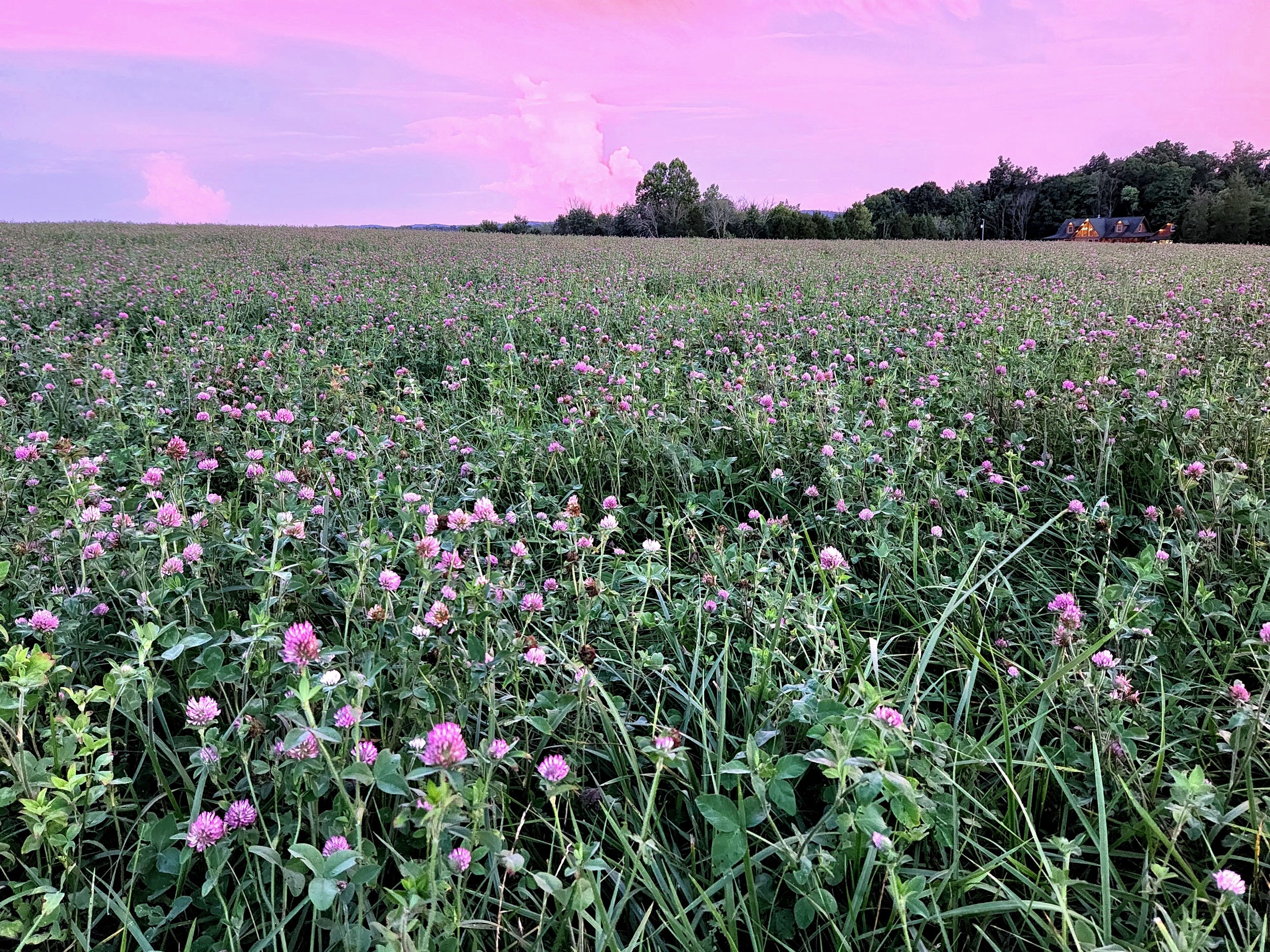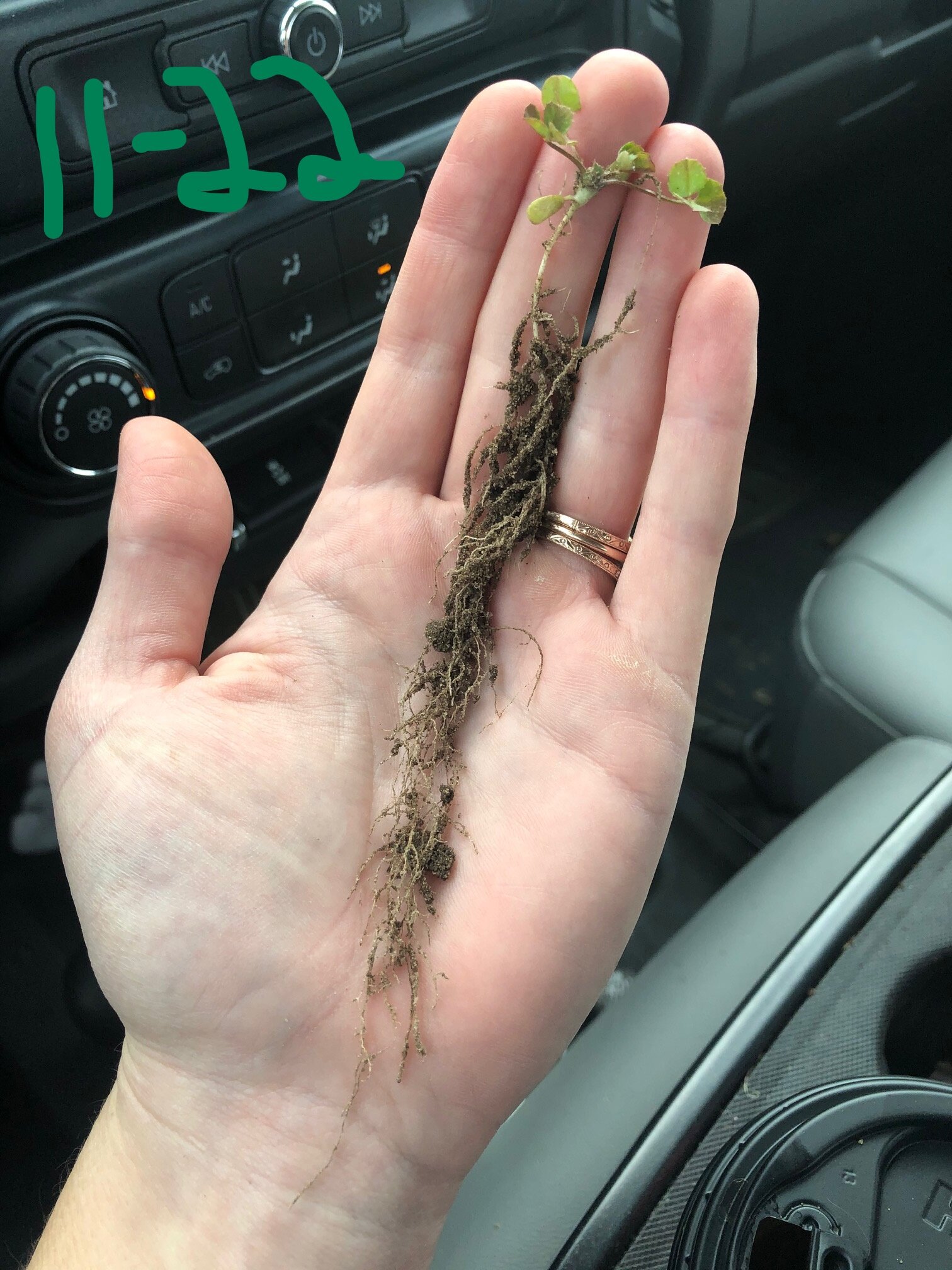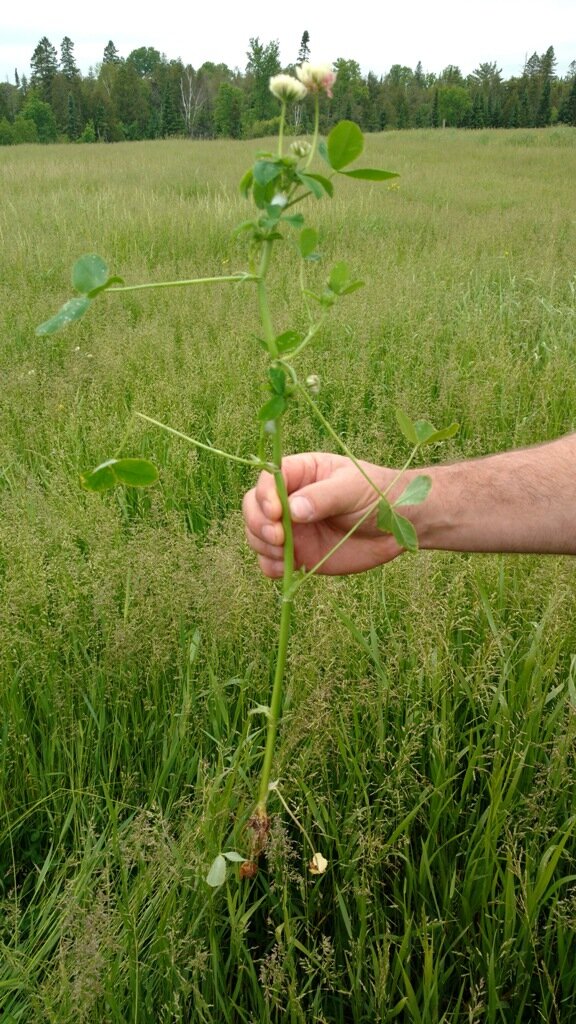Forage Clover
Clover is a staple in many grazing operations. Introducing clover is the fastest way to improve an existing stand of grass. Many pasture mixes now come with clover already added.
Hay & Graze Clover Mix
Seeding Rate: 2-8 lb/acre; Planting Date: April - May; August; can also frost seed in late February/early March
Hay & Graze Clover Mix is a mixture of outstanding clovers formulated at just the right percentage to give the best benefit for production livestock managers.
Gallant Red Clover is an industry leading clover that will give your pasture years of production.
Legacy Clover is an aggressive spreading white clover with very large leaves.
Put together in this formulation, these two clovers thrive together to bring you a revitalized pasture or hay field.
Click here to see tech sheet.
Medium Red Clover
Gallant Red Clover
Gallant red clover is setting the new standard in premium forage red clovers. The Ohio State University forage trial shows that Gallant is the highest yielding variety. In addition
Gallant improves with age, out-yielding all varieties in year two of the trial. This is due in large part to excellent persistence, where Gallant led the trial in stand life and was over 5 times more persistent than common red clover. Gallant also out-yielded common by 2.5 tons per acre. With the high prices of hay this makes Gallant a great investment. If you plan on planting red clover, plan on planting Gallant!
Ohio State Data on Gallant Red Clover
2017 Red and White Clover Report - University of Kentucky
Bearcat Red Clover
Bearcat is a diploid double-cut red clover. Complimented by aggressive regrowth and a superior disease resistance package, it has shown outstanding stand persistence and high forage yield. Disease resistance breeding included Fusarium wilt inoculation and Mycoleptodiscus root rot selections, which have contributed to its hardiness and consistent productivity in adverse environments. Bearcat is a medium maturity red clover. It has a semi-erect rowth habit, medium-to-tall height, and pubescent stems and leaves. Flower color is predominantly medium pink.
Cow enjoying a pasture filled with Gallant red clover - Upper Peninsula of Michigan.
Legacy white clover
Legacy White Clover was selected for stolon density, persistence under grazing, high yield, and large leaf size.
Characteristics of Legacy White Clover
persistent, grazing tolerant for season-long production
high stolon density
large leaf size
high yielding
greater winter and autumn productivity
Grasslands Legacy has been bred in New Zealand, using a comprehensive crossing method (poly crossing). Legacy is an elite selection where 5 breeding lines were selected and crossed after three years of trialing in a dairy farm trial in Manawatu, New Zealand. The selection criteria used for Legacy was: High persistence; High stolon density compared to other white clovers of similar leaf size; Excellent dry matter production; Competitive with grass
Fixation Balansa Clover
Fixation Balansa Clover is a great cover crop clover because of its ability to stand late season seeding, over wintering ability, and high biomass or forage production in the spring.
It can be seeded with cereal rye or triticale to use as a protein enhancing and nitrogen producing forage.
Fixation has a hollow stem so dry had production is possible with it.
As we learn more about it, we will be sure to add more information. Please read this article about Fixation Balansa Clover.
Also - check out the video to the right by Mississippi Forages explaining why Balansa Clover does not cause bloat.
Frosty Berseem Clover
Berseem clover is an annual clover from the Mediterranean that typically does not have much colder tolerance.
Frosty berseem clover has been selected to tolerate cold weather down to 5 degrees Fahrenheit.
Frosty works well as an annual forage crop or as a cover crop.
It can be grazed or made into dry hay. It can be used to strengthen a weak stand of alfalfa for a year.
Frosty berseem has beneficial tannins that keep animals from bloating on it. Please take a moment to read the following blog article about Frosty berseem clover.
Quick takes on Frosty Berseem:
no bloat
graze it; chop it
plant into thinning alfalfa stands
60 degree air temp is best
insects don't seem to touch it
1 day over alfalfa for drying down
avoid planting it too deep
Nick E. (Ohio farmer) - planted 15 pounds per acre into 1/2 stand of alfalfa and got tremendous results
For planting guidelines, see our Seeding Information Guide.














